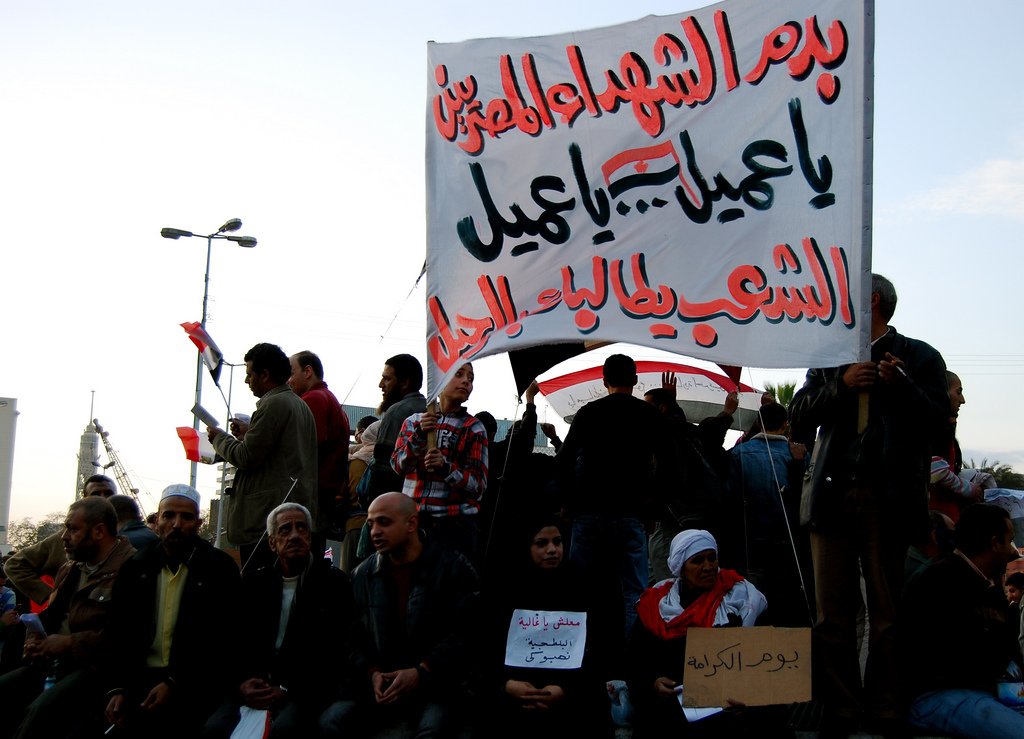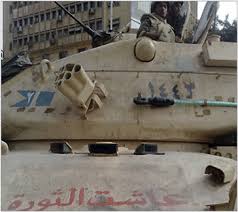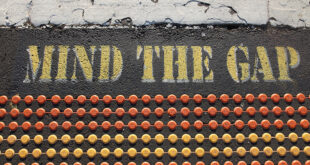Issue 19, fall 2014
https://doi.org/10.70090/ML14DWTD
Abstract
The impetus behind this paper is to examine the nature and function of the discourse of slogans of the Egyptian revolution of 2011. This paper covers only the period between January and March 2011, referring therefore to the change of discourse during this period. This tends to demonstrate that in this period, where the Egyptian public defied dominance and hegemony the discourse became freer and democratic. This paper therefore is designed to document this particular period of the Egyptian history where freedom and democracy contributed to a healthy democratic discourse. The textual and functional analysis of these slogans reveals that the Egyptian public political discourse has changed dramatically during this period. It has shifted from a discourse of complete allegiance to the regime into a discourse of total defiance and accountability; from a discourse of ‘long live sir’ to ‘down with the dictator’. However, this was a short-lived change as the political landscape has changed drastically in Egypt after July 3rd, 2013. A closer examination of change of discourse during the above-mentioned period necessitates a combined textual, social, cultural and political analysis of the slogans used during the Egyptian revolution of 2011. The analysis has shown that the slogans reflect a variety of themes and a diversity of political perspectives. The political nature of some of the slogans shapes and is shaped by the political orientation of Egyptian society in the above-mentioned period.
Slogans in political discourse: background
The study of slogans is not a new phenomenon; many scholars have examined the use of slogans in political discourse (Sharp 1984; Urdangs and Robbins 1984; Denton 1980). Others have looked at how social, cultural and political ideologies are embedded in slogans. Kaul (2010), for instance, considers slogans as part of ‘human dialogue’, where they are tailor-made to reflect the aims and aspiration of certain groups. In addition to the political ideologies of slogans, other studies have focused on the persuasive political nature of slogans and their impact on recipients, as well as their power to force change in certain contexts. In this respect, political slogans are regarded as effective means of persuasion, and a way to express political goals, raise political consciousness, and organise certain cultural attitudes (Denton 1980; McGee 1989). Furthermore, slogans can serve as a form of ‘controlling consciousness’ (McGee 1989). Such control frequently emanates from the persuasive nature of slogans, which often have a political impact on mobilizing and shaping the mind and culture of recipients. According to Condit and Lucaites (1993), social, political and ideological issues shape and are shaped by the use of slogans in the public discourse. They believe that through the analysis of slogans we can ‘gain an insight into how social and political problems are constituted and negotiated through political discourse’ (p. viv).
Apart from their functional role in informing us of the social and ideological realities of their producers, slogans can inspire and motivate people to take action in order to protect their existence or interests (Sharp 1984). Today, slogans are used across the world as a means for ‘popular persuasion in advertising and political campaigns’ (Lu 1999: 7). Aside from the marketing purposes they serve, slogans are used as potent tools to raise awareness of political, social and cultural issues that require collective action. One of the main functions of slogans is to generate emotional responses and perform persuasive functions that could contribute to the mobilisation of masses. These emotional and persuasive acts often serve as a rallying point for masses to act on issues of great interest to them (Sharp 1984).
In her analysis of the slogans of support groups for disability education in the United States context, Barton (1999: 463) concluded that ‘repetition of slogans and sayings is a common feature of support groups generally’. She found that the repetition of slogans and sayings has been used by the support group to serve different functions, some of which are informational and interactional; by informational she refers to the dissemination and publication of material. Interactional, however, refers to the concept of creating and establishing solidarity among participants to serve the interests of the group (Barton 1999). During the 2011 revolution, for instance, Egyptian slogans were used mainly to promote the protesters’ demands and establish solidarity among different political groups. Generally, these slogans encapsulate perspective(s) formulated by the Egyptian protesters. These perspectives, explained below, are reflected in the protesters’ wide range of demands.
As uprisings swept the Arab world, the call for the downfall of Arab regimes intensified, echoing in every slogan and saying. Some of these colourful slogans, as will be explained in the next section, reflect a new discourse; a discourse of defiance and challenge to the existing Arab regimes that have ruled their countries for years with an ‘iron fist’. As a case in point, the slogans are considered a turning point in the Egyptian public political discourse, which has been tied for so long to the structure of power in Egypt. They not only demonstrate the active role of the Egyptian public, but their unwavering challenge to the authority of the Mubarak regime. By challenging the existing structure the Egyptian public sought to rewrite the ‘master narrative’ and to transform the boundaries of the discourse to open up new democratic spaces beyond the control of the Egyptian regime (Aulich and Sylvestrova 1999: 5). These slogans and sayings, one could argue, do not spring from free minds; they often reflect the cultural, political and social ideologies of their producers (Fairclough 1995). They are not only a means to register Egyptians’ rejection of their regime, but an indication of a real change in Egyptian society. This short-lived change was apparent in the growing number of voices calling for freedom and democracy, thus leading to the marginalisation of the Mubarak regime’s voice, which, under immense pressure, started losing its authority. It should be mentioned here that the change of the political landscape post Egyptian revolution has muted some of the voices calling for freedom and democracy. This has brought into question the continuity of this change, particularly after the overthrow of the first elected civilian president.
A preliminary examination of the stages of the revolution in both Egypt and Tunisia indicates that the process was gradual. Firstly, protesters started with creating brands and seeking attention by positioning themselves as the defenders of freedom of expression, justice and democratic rights. By labelling themselves a democratic movement, it could be said that the protesters in Egypt sought to rally the Egyptian people around the cause of democracy. Secondly, the protesters created a popular movement with a strong image nationally and internationally. This image is that of a peaceful, democratic movement, which stands against poverty, unemployment and corruption. Thirdly, the protesters positioned themselves as representatives of the mass movement. In Egypt, for instance, they assumed this role through different activities, including their engagement with the Military Council in negotiating their demands.
Data analysis
The data of this study consists of slogans and sayings employed during the Egyptian revolution of 2011. The data was collected between January and March 2011, from different media sources, notably Social Media, al-Jazeera, al-Arabiya and BBC Arabic. In order to be able to analyze the discourse and function of these slogans, they have been categorised into themes, and their usage contextualised within the wider Arab social, political and cultural context. Apart from the textual analysis of the content of these slogans, I have examined how these slogans reflect a change in the production and consumption of discourse. It must be stressed here that the analysis and result of this research are based on the data collected from the above period.
Egypt: the spark that ignited the revolution
The year 2010/2011 witnessed a number of protests and uprisings across the Arab world. The first protest erupted in Tunisia in December 2010, as a result of the Tunisians’ discontent over widespread poverty, unemployment and political oppression. The Tunisian grievances were thrust to the surface when a Tunisian graduate set himself ablaze in protest against unemployment and maltreatment (Lahlali 2011). The revolution led eventually to the president of Tunisia fleeing the country to Saudi Arabia. The Tunisian model had a domino effect in the Arab world, where Arab capitals from Rabat to Damascus witnessed an unprecedented level of protests. Indeed, the Tunisian action inspired and mobilised the Arab population to take action against what it perceived as corruption and unfairness. Egyptian youth, for instance, emulated their Tunisian counterparts and succeeded in ousting their president, Mubarak. During the uprising, the Egyptian public communicated their demands through slogans and sayings, some of which were directed against Mubarak and his henchmen while other slogans conveyed general demands related to freedom of expression, employment, political diversity, etc. The slogans were written in different languages, mainly Arabic and English; however, despite the variety of languages in which these slogans were written, the message remained same, ‘Mubarak should leave’. Furthermore, the slogans reflected the different political orientations of the Egyptian people. There are slogans that have a liberal, secularist, and religious nature. This diversity in the discourse of slogans is indicative of the diversity of Egyptian society. The new discourse of slogans, which emanates from a range of political views, has shown that the Mubarak regime had lost its legitimacy with the people, and that its power and authority relied on various elements of the state’s security apparatus (Aulich and Sylvestrova 1999: 58).
What is ironic and intriguing at the same time is that the symbols of power of these regimes had been turned into a publicity field for protesters. Tanks, for instance, as the photograph below demonstrates, have been decorated with revolutionary slogans, such as ‘long live the revolution’. The irony here is that the military, which is supposed to protect the regime, had become a platform for demonstrators to call for the removal of the same regime. As shown in the picture, the combination of the text and image is designed to serve as a persuasive force and not an illustrative one (Fuertes-Olivera et al, (2001)). Indeed, slogans have filled every space in and around the Tahrir square in Cairo. It was not only military vehicles that were targeted; places of worship did not escape anti-Mubarak slogans either.
Tanks covered with revolutionary slogans, Al Jazeera
Slogans of a religious nature
As mentioned above, the diverse fabric of the Egyptian political landscape is reflected in the wide range of slogans chanted and displayed in Tahrir Square and across Egypt. This section analyzes the function and production of some of the slogans that have a religious nature.
Extract 1
If you turn back (from the path), he will substitute in your stead another people; then they would not be like you (Quran 47: 38)
Extract 2
Allah will surely make it of no effect: for Allah prospereth not the work of those who make mischief (Quran 10: 81)
Extract 3
Truly strong is the grip of thy Lord (Quran 85: 12)
Extract 4
The prophet’s Hadith: Verily, Allah gives respite to the oppressor. But when He seizes him, He does not let him escape.
The above examples patently show the prevalence of religious discourse in some of the slogans. What is striking about these slogans is the strong discourse of reprimand and criticism that they convey. The regime, though not explicitly mentioned in the above slogans, is depicted as ‘corrupt’, ‘unjust’, ‘oppressor’, and ‘aggressor’. The grammatical construction of these slogans is particularly eye-catching. They almost all seem to start with ‘ina’ (indeed), a particle used in Arabic to express certainty and emphasis. This shows not only the high morale and confidence of the protesters, but their certainty that victory is imminent. The selection of these verses is very revealing indeed; they are chosen to highlight some of the common features between the Mubarak regime and other past tyrannical regimes, implicitly referred to in those verses. In order to fully understand the meaning of these verses, we need to place them in their overall Quranic context. Extract 1, for instance, is taken from Surah Muhammed; this particular Surah epitomises the message of hope and perseverance. According to Muslims, this Surah was revealed at a time when Muslims were being persecuted in Makkah in particular and in Arabia in general. The Surah was revealed to offer hope and comfort to Muslims that their intolerable conditions were unsustainable; instilling in them therefore a sense of hope that the situation will change for the better. It is apparent from the above slogans that protesters have drawn an analogy between their conditions and those of the Prophet Muhammed, suggesting that Mubarak’s regime is no different than the opponents of the Prophet. The same message of hope is communicated in Surat Yunus (Q10) (extract 2). These verses used by protesters were intended to motivate and raise hope amongst Egyptians that Mubarak’s regime would be removed and replaced by a democratic one, which, it was hoped, would serve the good of the Egyptian people. It could be said that the use of Quranic verses as slogans was designed to give authority to the protesters’ messages and actions. One could interpret these slogans, however, as giving the uprising an Islamic identity, or, at least, characterising it that way. Although Islamic groups in Egypt, notably the Muslim Brotherhood, kept a low profile during the Egyptian revolution, the religious nature of some of the slogans is a clear indication of their tacit active involvement in the revolution. As clearly stated above, the lexicon in some of the slogans is derived from the Quranic and Hadith texts. This religious narrative has not been directly claimed by any Islamic group. The conclusion to be drawn from this is that Islamic discourse is present, but the agent behind it, for various reasons, remained anonymous. The prevalence of religious intertextuality such as ‘zabaniya’, ‘taghiya’ (dictator), ‘taghut’ (dictator), all of which mean ‘dictator’ and ‘tyrant’, serve as a reminder of the religious register of these slogans. On the whole, as will be discussed later, the slogans and sayings represent a mixture of discourse, reflecting the diversity of people involved in the revolution.
Slogans of hope and aspiration
Although the protesters faced a barrage of criticism and reprimand from the Mubarak regime, their hope and aspiration for a better future armed them with a sense of perseverance and patience, as is demonstrated in the following slogans.
Extract 5
Revolution until triumph
Extract 6
The long endurance will come to an end in a matter of hours
In a similar way, extracts 5 and 6 reinforce the theme of hope, indicating that the long struggle will shortly culminate in victory. Whilst these slogans attempt to assure protesters that victory is certain and imminent, they also call for perseverance until all demands have been met, the foremost of which was the resignation of the president. The slogans in this category could be said to reflect the Arabic traditional discourse of hope and optimism. Extract 6 exemplifies this message of hope and perseverance. It reassures protesters that the days of oppression and tyranny will be over in a matter of hours. This slogan has undoubtedly been used as a motivating factor for those who might have lost hope, or those who have started wavering and questioning the outcome of the revolution. This extract does not only instil hope and inspiration into the hearts and minds of the Egyptian people, it also reminds them that the long struggle for freedom and democracy will shortly draw to a close. The use of the additive conjunction ‘wa’ (and) at the beginning of the slogan in extract 6 could be said to have been used to show the perseverance of the Egyptian people. In Arabic grammar, ‘wa’ functions as an additive conjunction, connecting sentences or segments of them to previous ones. However, the segment preceding ‘wa’ in extract 6 is omitted and the meaning of the whole sentence is left wide open to interpretation. One could read into it that the producer sought to rally the audience behind the protesters, asserting that hardship, oppression and injustice, which Egyptians have endured for years, will shortly be over. The use of the exception particle ‘ila’ is also very revealing in this slogan. It could be said that it has been used here to minimise the duration of the wait. The paradox in time, reflected in the use of ‘sanawat’ (years) and ‘sa’at’ (hours), has been used to maximise the hope that the long wait for freedom will shortly be over. What is striking about extract 6 is that it could have been written differently and in a straightforward manner; however, the producers opted for the insertion of the exception particle ‘ila’ (except) to emphasise the action and demonstrate in unequivocal terms that victory over the regime is imminent.
Repetition is another prominent feature in the slogans. According to Al-Khafaji (2005: 6), repetition can serve ‘didactic, playful, emotional, artistic, ritualistic, textual and rhetorical functions’. Similarly, Hoey (1991: 20) argues that part of the function of repetition in language is ‘its informational value in providing a framework for interpreting what is changed or “new”’ by repeating what has already been said in a process which he calls ‘repetition and replacement’. For his part, Reisigl (2008b: 258) argues that rhetoric can have a great ‘influence on the formation of public attitudes, opinions and will (identity construction, manufacturing of consent and solidarity)’. In this respect, repetition could be said to be employed in the slogans to persuade protesters and emphasise their collective action. The repetition of the word ‘thawra’ (revolution), for instance, in extract 5 shows the protesters’ emphasis on the continuation of the revolution until ‘victory’ is achieved. This type of repetition is a commonly used rhetorical feature in Arabic, and is often used to elevate the Arabic style.
Call for reprimand and prosecution
The call for reprimand and prosecution of Mubarak and his regime for the alleged corruption and human right abuses is another theme identified in the slogans.
Extract 7
People would like to bring to trial the dictator (murderer/killer president)
Extract 8
Immediate trial for those responsible for the killing of the martyrs of the revolution, and for looting the wealth of the country.
As is shown in the above slogans, one of the major demands of protesters is the call for the prosecution of the president (extract 7). What is remarkable about this slogan is the attribution of the adjective ‘al-qatil’ (the killer, the murderer) to the president. This has clearly broken the norm that the president is the guardian of the state, and therefore due respect should be shown to him. Another tangible example of this broken norm is the slogan ‘people want to prosecute the president’. It does not only convey strong feelings of anger of the Egyptian people towards their president, but expresses a level of cynicism in the judicial system. It is the people who want to prosecute the president, and not the courts or the Supreme Court. Although verbal sentences are the norm in Arabic, in this slogan the subject preceded the verb in order to emphasise the doer of the action, thus granting the Egyptian people the power to bring the president to trial. This is symbolic in two ways; firstly, it shows the mistrust of the Egyptian people in their judicial system, and secondly it displays the power and determination of the people.
In extract 8 the regime is described as a ‘thief’ and a ‘murderer’, who has taken the lives of innocent protesters. This particular example reflects the paradigm of ‘us’ against ‘them’. The regime, which has long been seen as the service provider for citizens, has been rejected by the Egyptian people for being corrupt and undemocratic. The president, the symbol of power, authority and respect, has now been turned into a hated figure amongst Egyptians. This paradigm of the people against the regime reflects the new shift in Egyptian society, where the most respected and feared person has become the most detested figure nationally. To keep in line with their message of freedom and democracy, protesters often refer to Mubarak as a ‘dictator’, ‘thief’ and ‘tyrant’. By assigning such attributes to Mubarak, protesters have shaped the nature of debate, and sought to inform the public of ‘the evils of Mubarak’. Through such a practice, protesters aimed at mobilizing the Egyptian public against their ‘enemy’, Mubarak. By making Mubarak the central focus, protesters sought to present him as ‘an obstacle, the opposite, an existential threat and, thus, the political target towards which the force of the attack is turned’ (Marovic 1997: 27 in Jusic 2009: 34). Creating a visible ‘enemy’ can rally the public and create a homogeneous public sphere, with the sole aim of taking collective action to defeat the ‘enemy’. The social relationship between the protesters and the president, as described above, is determined and sustained by the use of language (Fairclough 1989: 20). According to Fairclough (1989: 23), language has an internal and dialectical relationship with society; ‘whenever people speak or listen or write or read, they do so in ways which are determined socially and have social effects’ (Fairclough 1989: 23).
Call for immediate resignation of the president
As the uprising gathered momentum, the slogans intensified pressure on Mubarak by calling for his immediate resignation, as the following extracts demonstrate.
Extract 9
Down with Mubarak, the puppet
Extract 10
Persevering until the downfall of the tyrant
Extract 11
Down with pharaoh and tyrant
Extract 12
Down with the tyrant
Extract 13
Mubarak, you should leave or you will be ousted
Extract 14
Mubarak should be brought down forever
Extract 15
I am not a brotherhood member, but Mubarak is the one outlawed
Extract 16
People would like to bring down the regime
Extract 17
People would like to bring down the president
Extract 18
Mubarak, be honest, are you a thief or not?
As is articulated in the above slogans, the protesters were unequivocal in calling for the resignation of Mubarak. They added attributes to Mubarak’s name to justify their call for his resignation. Mubarak is described as the ‘agent’, ‘puppet’, and a ‘traitor’. Mubarak, who was once a symbol of heroism and authority, became a detested figure amongst protesters.
The most commonly used attributes when describing Mubarak are ‘taghiya’ (tyrant) or ‘fir’awn’ (Pharaoh). These are negative attributes designed to portray Mubarak as a tyrant leader who has no regard for his own people. The most striking of these slogans is the one comparing Mubarak to Pharaoh. In Arabic literature, Pharaoh is a symbol of tyranny, aggression and dictatorship. This, again, reveals quite lucidly the strong feelings of discontent among the Egyptian people. A closer inspection of these slogans indicates that they are determined by the social and political orientation of the protesters. The social situation is marked by the lack of freedom and liberty, employment and economic opportunities. These conditions are overtly expressed in the slogans (extract 25). The choice of the language of these slogans serves as an index of the strained relationship between the Egyptian people and their regime. Indeed, it is these social relations that ‘determine (the) properties of discourse’ of the chanted slogans (Fairclough 1989: 19).
Slogans and protesters’ demands
Apart from the call for the resignation and prosecution of the president, some of the slogans express the protesters’ demands for freedom, democracy, liberty, the lifting of emergency laws, and employment. Other slogans express the protesters’ rejection of any partial solution to their demands. This, once again, demonstrates the lack of trust of the Egyptian people in the Mubarak regime.
Extract 19
No to emergency laws
Extract 20
We want the military to bring down the dictator
Extract 21
No to military rule
Extract 22
A day will come when justice will be done
Extract 23
We will not be deceived by partial solutions
Extract 24
The blood of the martyrs will not go in vain
Extract 25
Extract 26
People would like to prosecute the president, the murderer, Al Jazeera
As is shown in the above examples, the protesters’ demands were stridently chanted and clearly listed. What is striking about the list of demands, as in extract 25, is the sequential order in which they are listed. They start with the call for the removal of Mubarak; dissolution of the parliament; lifting of emergency laws; forming of a new interim government; holding of fair and transparent elections; then presidential elections. The chronological order of these demands indicates that the protesters have shown a significant level of organisation and structure.
Although most of the slogans are in form of texts, others emerge to be accompanied with images or effigies of the president (extract 26). The slogans are very definite and, in some cases, very personal, particularly those referring to Mubarak. This made the conflict very personal between Mubarak and the Egyptian people. As mentioned above, Mubarak was referred to as a ‘dictator’ and ‘oppressor’. By assigning such attributes to Mubarak, the protesters shaped the nature of debate, and sought to inform the public of the ills of Mubarak. In doing so, the protesters sought to mobilise the Egyptian public against Mubarak, who was characterised as ‘an obstacle, the opposite, an existential threat and, thus, the political target towards which the force of the attack is turned’ (Marovic 1997: 27 in Jusic 2009: 34). This paradigm of ‘us’ against ‘him’ is designed to rally the public and create a homogeneous public sphere, with a sole aim of taking collective action to oust Mubarak and his regime.
The predominance of negation in the slogans is another issue that needs further consideration. One interpretation of the prevalence of negativity could be that it reflects the protesters’ refusal and rejection of anything that does not satisfy their demands. Grammatically, ‘la’ is used to negate the present tense, but it has been employed in the above slogans to negate nominal phrases and clauses, in order to express a total rejection of any response that does not meet the protesters’ demands. ‘Lan’ is also utilised to emphasise their rejection of any partial solution that would fall short of meeting their demands in the future. By combining both the negative particle ‘la’ and ‘lan’, protesters sought to send a clear message to the Mubarak regime that they will never backpedal on their demands. Such a stand reflects the emerging shift in the power structure of Egyptian society. The absolute and unquestionable power that the regime used to enjoy has been challenged by the wish and desire of the Egyptian public for a new political structure. The slogans mark a new shift in the production of Arabic discourse. According to Fairclough (1989: 31), ‘the way in which orders of discourse are structured, and the ideologies which they embody, are determined by relationships of power in particular social institutions, and in the society as a whole’. The case of Egypt, as is evident from the above analysis, reflects a short-lived change in the structure and formation of the order of discourse. This formation of a new discourse mirrors the change in the social and political structure of Egyptian society during the time of the Egyptian revolution. Based on the above analysis, one would agree with Fairclough that ‘discourse is part of social practice and contributes to the reproduction of social structures’ (1989: 74).
Slogans calling for freedom and liberty
Whilst protesters’ discontent was directed against the regime, their desire for freedom and democracy was well articulated in the chanted slogans. The following examples show protesters’ hunger and desire for freedom and liberty.
Extract 27
The dawn of freedom has arrived. The will of the nations will be re-established
Extract 27 refers to ‘light’ in reference to freedom. In the Arabic culture the notion of ‘shams’ (sun) is often associated with light, hope and optimism. In this extract, the word ‘shams’ collocates with the verb ‘ashraqa’ (to rise) to show that the long struggle for freedom has come to an end, and that perseverance and patience, two highly regarded characteristics in Arabic culture, have prevailed. The verb ‘ashraqa’ connotes a sense of a new dawn and a new beginning, and, in the above example, it connotes the dawn of a new era of freedom and liberty. The use of ‘wa lasawfa’ in the same example expresses certainty that the Egyptian ‘people’ will determine their own destiny and future. Again, the use of ‘iradat sho‘ub’ (the will of nations) is taken from the well-known Tunisian poem, the ‘Will of life’, by Abu al-Kassim Ashabi, which was written in response to the French colonisation of Tunisia. The poet in this poem urges his fellow Tunisians to combat the French occupation of his homeland, insisting that freedom can only be gained if people fight for it. The poem has become a symbol for the call for freedom, perseverance, hope and change in the Arab world. The following are extracts from the poem.
If the people will to live
Providence is destined favourably to respond
And night is destined to fade
And the chains are certain to be broken
The use of dialects in the chanted slogans
What is striking about the Egyptian revolution is the rare use of the Egyptian dialect. This is very revealing indeed. It indicates that the revolution is led by those in the middle-class, who master both Modern Standard Arabic (MSA) and English. The rare use of the dialect could be attributed to the fact that Egyptians have used MSA in order to communicate their action to the wider Arab population. The following are examples of some slogans in the Egyptian dialect.
Extract 28
We do not want him, Hosni Mubarak, we do not want him. He must leave, he must leave.
Extract 29
We will oust you, Mubarak.
Extracts 28 and 29 are two examples of the use of dialect in the slogans. The substance of these two slogans reinforces the call for the resignation of Mubarak. Again, these two slogans express a total rejection of the regime, reflecting the determination of the people to force the president to step down (extract 29). The intriguing issue in extract 28 is the use of the third person pronoun when referring to Mubarak – ‘we do not want him’. The protesters seem to register their complaint not directly to Mubarak but to a third party. Rather than using the second pronoun ‘you’, as in extract 29, they have employed the pronoun ‘him’. As is apparent from the above extracts, despite the use of the dialect, the main message remains the same: ‘Mubarak should leave’.
Conclusion
This paper has closely examined and analyzed the usage of slogans during the Egyptian revolution of 2011. The analysis has indicated that by calling for the removal of Mubarak some of these slogans have deviated from the Arabic tradition of loyalty and allegiance to the ruler. What is interesting here is that the discourse of politeness, which has long characterised Arabic culture, particularly when addressing superiors, has been replaced with a discourse of reprimand and defiance. The language used in these slogans reflects the political and social change, which took place in Egyptian society in 2011. The attitude of the protesters towards their president and government is far more hostile than people are used to in the Arab world. The discourse of politeness and respect has given way to the discourse of reprimand and accountability. Such a change, as has been demonstrated over the course of this paper, is clearly displayed in the slogans that have labelled Mubarak as a ‘tyrant’, ‘thief’, ‘corrupt’, and so on.
As we plough through the data, it has become evident that the variety of slogans reflects a diversity of views, all of which express the Egyptian public’s discontent and frustration with the Egyptian regime. The language register used in the slogans is also very revealing; it echoes the diversity of Egyptian society and the different political orientations of its groups, including, amongst others, Islamic, secularist and liberal views. MSA remains the most widely used language in these slogans. Some slogans, however, have been written in English. This is a good indicator of how actively the Egyptian middle-class participated in the revolution. Perhaps contrary to expectations, the Egyptian dialect did not feature prominently in the slogans. Only a few slogans were written in the Egyptian dialect, a fact that tends to support the view that the Egyptian revolution was led by the young, educated middle-class. Nevertheless, the absence of dialect in the revolution could be attributed to the desire of Egyptian protesters to communicate their action to the wider Arab public. Again, the issue of the Arabic language as a rallying point across the Arab world has been brought to the fore here.
In brief, it could be said that the chanted slogans represent the beginning of ‘the democratization of discourse’ in Egypt. This democratization of discourse is reflected in the tendency of the protesters to establish a democratic discourse, where inequalities and asymmetries are removed, and where people’s rights and obligations are upheld (Fairclough 1992: 201). According to Fairclough (1992), democratization of discourse is ‘a major parameter of change’. Indeed, this discourse serves as an index of the social, cultural and political change that the country was going through at that period. This short-lived change was brought to a prompt end by the Egyptian military who seized power in July 2013. Although the past few years in Egypt have shown signs of democratization of discourse, this change has become muted due to the change in the political situation in Egypt.
 Arab Media & Society The Arab Media Hub
Arab Media & Society The Arab Media Hub







